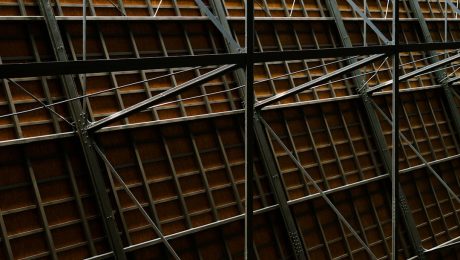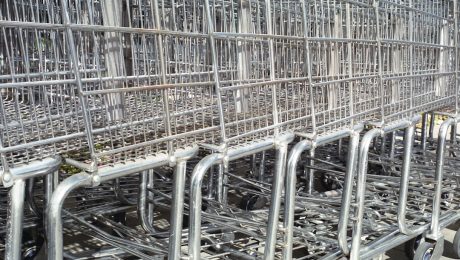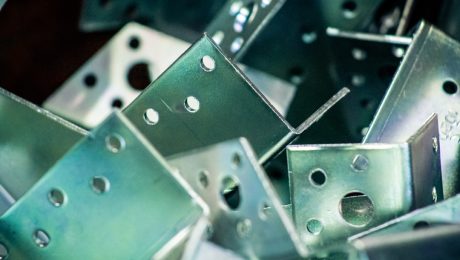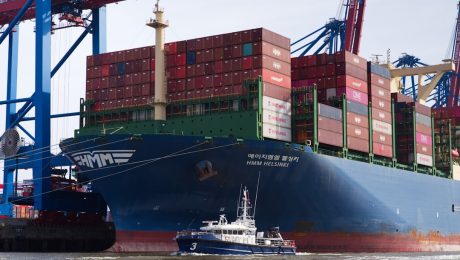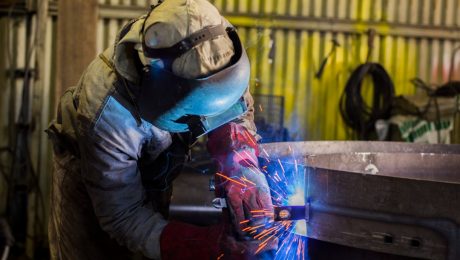Material selection in construction is far more than just picking the cheapest option. It’s a complex process requiring careful consideration of numerous factors to ensure a successful and sustainable project. This guide delves into the key aspects of material selection, empowering you to make informed decisions that optimize performance, durability, and aesthetics.
1. Structural Performance: The Foundation of Strength
The primary function of any building material is to provide structural integrity. This involves selecting materials with the appropriate strength, stiffness, and load-bearing capacity to withstand anticipated loads and environmental stresses. Concrete, steel, and timber are common choices, each with its own strengths and weaknesses. Concrete excels in compression, making it ideal for foundations and columns. Steel boasts high tensile strength, suitable for beams, frameworks, and reinforcement within concrete structures. Timber, a renewable resource, offers a good strength-to-weight ratio and is often used in framing and decking. The choice depends on the specific design, load requirements, and budget.
Factors to consider within structural performance include:
- Compressive strength: Ability to resist crushing forces.
- Tensile strength: Ability to resist stretching forces.
- Shear strength: Ability to resist forces acting parallel to the surface.
- Flexural strength: Ability to resist bending forces.
- Modulus of elasticity: A measure of stiffness.
Accurate calculations and engineering analysis are crucial to ensure the selected materials meet the structural demands of the project.
2. Durability and Longevity: Building for the Future
Durability refers to a material’s ability to withstand degradation over time due to environmental factors like weathering, temperature fluctuations, and chemical exposure. Selecting durable materials minimizes maintenance costs and extends the lifespan of the structure. Factors affecting durability include:
- Weather resistance: Resistance to rain, snow, sun, and wind.
- Chemical resistance: Resistance to acids, alkalis, and other chemicals.
- Fire resistance: Ability to withstand fire and prevent its spread.
- Biological resistance: Resistance to decay, insect infestation, and fungal growth.
- UV resistance: Resistance to degradation caused by ultraviolet radiation.
For example, choosing treated timber over untreated timber significantly enhances its durability against rot and insect damage. Similarly, selecting corrosion-resistant steel or applying protective coatings can extend its lifespan. The climate and environmental conditions of the construction site heavily influence the selection of durable materials.
3. Cost-Effectiveness: Balancing Quality and Budget
Cost is a significant factor in material selection. While prioritizing quality and durability is crucial, it’s essential to find a balance that aligns with the project budget. The initial cost of materials is only one aspect; lifecycle costs, including maintenance, repairs, and replacements, should also be considered. A seemingly cheaper material might prove more expensive in the long run due to frequent repairs or shorter lifespan. Careful analysis of material costs, including transportation, installation, and potential future maintenance, is vital for effective budget management.
Value engineering techniques can help identify cost-effective alternatives without compromising quality or performance. This might involve exploring different material grades, sizes, or sources to optimize costs.
4. Sustainability and Environmental Impact: Building Responsibly
Increasingly, sustainability is a paramount concern in construction. This involves considering the environmental impact of materials throughout their lifecycle, from extraction and manufacturing to disposal or recycling. Sustainable materials minimize carbon emissions, reduce waste, and conserve natural resources. Examples include recycled materials, locally sourced materials, and materials with low embodied energy (the energy used in their production and transportation).
Choosing sustainable materials not only reduces environmental impact but can also enhance a building’s energy efficiency and improve its overall performance. Sustainable certifications, such as LEED, provide guidance and recognition for environmentally responsible construction practices.
5. Aesthetics and Design: Creating a Visually Appealing Structure
The aesthetic qualities of materials significantly impact the overall design and visual appeal of a structure. Material selection should align with the architectural style, intended use, and desired ambiance. Factors to consider include:
- Color and texture: The visual impact of the material’s surface.
- Pattern and grain: Natural variations that add character and visual interest.
- Finish and surface treatment: Methods used to enhance the appearance and durability of the material.
- Light reflectivity and transmission: How the material interacts with natural and artificial light.
The interplay of different materials can create visually striking and functional spaces. For example, combining concrete’s strength with the warmth of timber can result in a visually appealing and structurally sound building.
Careful and informed material selection is the cornerstone of successful construction projects. By considering structural performance, durability, cost-effectiveness, sustainability, and aesthetics, you can ensure the creation of high-quality, long-lasting, and environmentally responsible structures.
Tags: Material Selection, Construction Materials, Building Materials, Sustainable Construction, Construction Engineering
Choosing the right pipe for your project is crucial. Two common manufacturing processes, hot-finishing and heat-treating, significantly impact a pipe’s properties and suitability for various applications. This guide delves into the differences between hot-finished and heat-treated pipes, helping you make informed decisions.
Understanding Hot-Finished Pipes
Hot-finished pipes undergo a process where steel is heated to a high temperature (above its recrystallization temperature), then rolled or shaped into the desired dimensions. This high-temperature deformation improves the pipe’s ductility and toughness. The process typically involves several steps: heating the steel billet to a specific temperature, piercing the billet to form a hollow shape, rolling the hollow shape to the final dimensions, and finally cooling. The final cooling is usually air cooling, leading to a relatively fast cooling rate. This process is cost-effective and suitable for producing large quantities of pipes with relatively consistent properties. However, the resulting microstructure isn’t as refined as in heat-treated pipes, leading to slightly lower strength and hardness.
The Heat-Treating Process: Enhancing Pipe Properties
Heat treatment is a secondary process applied to improve the mechanical properties of already formed pipes, often those initially hot-finished. This involves carefully controlled heating and cooling cycles to alter the microstructure of the steel. Different heat treatments, such as annealing, normalizing, quenching, and tempering, can achieve specific properties like increased strength, hardness, or improved ductility. For instance, quenching and tempering is a common heat treatment method that enhances strength and hardness while maintaining toughness. The specific heat treatment chosen depends on the desired properties and the type of steel used.
Comparing Mechanical Properties: Strength, Hardness, and Ductility
Hot-finished pipes generally exhibit good ductility and toughness, making them suitable for applications requiring bending or forming. However, their yield strength and tensile strength are typically lower than those of heat-treated pipes. Heat-treated pipes, especially those subjected to quenching and tempering, possess significantly higher strength and hardness but may have slightly reduced ductility compared to hot-finished counterparts. The choice between the two depends on the application’s specific requirements. A high-strength application might necessitate heat treatment, while an application requiring significant bending might benefit from the ductility of a hot-finished pipe.
Applications of Hot-Finished and Heat-Treated Pipes
Hot-finished pipes find widespread use in various industries, including construction (water and gas pipelines), oil and gas transportation, and general structural applications. Their cost-effectiveness and good ductility make them suitable for projects where high strength isn’t the primary concern. Heat-treated pipes, on the other hand, are preferred in applications demanding high strength and wear resistance. These include high-pressure pipelines, pressure vessels, machinery components, and applications where fatigue resistance is critical. The specific application dictates the choice between these two types of pipes.
Cost Considerations: Balancing Performance and Budget
Hot-finished pipes are generally less expensive to produce than heat-treated pipes. The additional steps involved in heat treatment add to the overall cost. However, the enhanced properties of heat-treated pipes may justify the higher cost in applications where failure would be costly or dangerous. Therefore, a cost-benefit analysis should be conducted to determine the most economical and suitable option for a given project. Factors to consider include the pipe’s lifespan, the potential cost of failure, and the required performance characteristics.
In conclusion, the choice between hot-finished and heat-treated pipes depends on a careful evaluation of the application’s requirements, desired mechanical properties, and budget constraints. Understanding the nuances of each process allows for informed decision-making, ensuring the selection of the most suitable pipe for optimal performance and longevity.
Tags: hot-finished pipes, heat-treated pipes, steel pipes, pipe manufacturing, pipe properties
Offering a wide product range can be a double-edged sword. While it promises increased revenue and customer loyalty, it also presents significant challenges in terms of inventory management, marketing, and overall business strategy. This comprehensive guide explores the intricacies of managing a diverse product portfolio, outlining both the advantages and disadvantages to help you make informed decisions.
1. The Allure of Diversification: Advantages of a Wide Product Range
A broad product catalog offers several compelling advantages. Firstly, it reduces reliance on a single product or market segment. If one product underperforms, others can compensate, mitigating risk and ensuring business stability. Secondly, it attracts a wider customer base. By catering to diverse needs and preferences, you expand your market reach and capture a larger share of the overall demand. This diversification also allows for cross-selling and upselling opportunities, boosting average order value and customer lifetime value. Finally, a wide range can enhance your brand image, positioning you as a one-stop shop and a leader in your industry. This perception of comprehensiveness can significantly improve customer trust and loyalty.
2. The Complexity of Choice: Challenges in Managing a Wide Product Range
However, the benefits of diversification come at a cost. Managing a vast inventory requires significant investment in storage, logistics, and inventory management systems. Tracking stock levels, managing supply chains, and minimizing waste become exponentially more complex. Furthermore, marketing and branding become more challenging. Creating effective marketing campaigns that resonate with diverse customer segments requires a nuanced approach and potentially higher marketing expenses. Maintaining consistent quality and customer service across a wide range of products can also be a significant hurdle, potentially leading to diluted brand identity if not managed carefully.
3. Strategic Segmentation: Targeting Diverse Customer Needs
To effectively manage a wide product range, strategic market segmentation is crucial. Instead of trying to appeal to everyone, you need to identify distinct customer groups with specific needs and preferences. This allows for targeted marketing campaigns that resonate with each segment, increasing the efficiency of your marketing spend. Understanding demographics, psychographics, and buying behaviors within each segment helps tailor product offerings and messaging, maximizing conversion rates. This requires thorough market research and data analysis to identify key segments and their unique characteristics.
4. Streamlining Operations: Efficient Inventory and Supply Chain Management
Efficient inventory management is paramount when dealing with a wide product range. Implementing robust inventory tracking systems, employing forecasting techniques, and optimizing storage solutions are essential for minimizing waste and maximizing profitability. Just-in-time inventory management can help reduce storage costs and minimize the risk of obsolescence, while strong relationships with suppliers are crucial for ensuring timely delivery and maintaining consistent product quality. Investing in sophisticated inventory management software can automate many of these processes, significantly improving efficiency and reducing errors.
5. Branding and Messaging: Maintaining a Consistent Brand Identity
Despite the diversity of your product offerings, maintaining a consistent brand identity is crucial. While individual product lines may cater to specific segments, the overall brand message should remain cohesive and reflect your core values. This requires a well-defined brand strategy that outlines your brand personality, values, and target audience. Consistency in messaging, visual identity (logo, color palette, typography), and customer service across all product lines helps strengthen brand recognition and build customer trust. This unified brand experience reinforces the perception of your company as a reliable and trustworthy provider, even with a vast and varied product catalog.
Successfully navigating the complexities of a wide product range requires careful planning, strategic execution, and a commitment to continuous improvement. By understanding the advantages and challenges, implementing effective segmentation strategies, and optimizing operational efficiency, businesses can leverage the potential of diversification to achieve sustainable growth and market leadership.
SEO-Friendly Tags:
- Wide Product Range
- Product Diversification Strategy
- Inventory Management Techniques
- Market Segmentation for Businesses
- Brand Management for Diverse Products
body {
font-family: sans-serif;
line-height: 1.6;
}
h1, h2, h3 {
color: #333;
}
img {
max-width: 100%;
height: auto;
display: block;
margin: 20px auto;
}
Understanding the properties of materials is crucial in various engineering disciplines. Mechanical testing, using specialized devices, provides the necessary data to ensure structural integrity, predict performance, and optimize designs. This comprehensive guide delves into the world of mechanical test devices, equipping you with the knowledge to effectively utilize them.
Types of Mechanical Test Devices and Their Applications
Mechanical test devices are categorized based on the type of stress they apply to a material. Common types include:
- Tensile Testing Machines: These machines apply a uniaxial tensile force to a specimen until failure, determining properties like tensile strength, yield strength, and elongation. They are widely used in the testing of metals, polymers, and composites.
- Compression Testing Machines: These machines apply a compressive force to a specimen, measuring its compressive strength and deformation. They are crucial in evaluating the strength of concrete, ceramics, and other brittle materials.
- Universal Testing Machines (UTM): These versatile machines can perform both tensile and compression tests, and often incorporate additional capabilities like bending, shear, and fatigue testing. They are highly adaptable and commonly found in research and quality control labs.
- Hardness Testers: These devices measure the resistance of a material to indentation, providing an indication of its hardness and strength. Common types include Brinell, Rockwell, and Vickers hardness testers.
- Fatigue Testing Machines: These machines apply cyclic loading to a specimen to determine its endurance limit and fatigue life. They are vital in assessing the durability of components subjected to repeated stress.
The choice of testing device depends heavily on the material being tested and the specific properties of interest.
Safe Operation Procedures for Mechanical Test Devices
Safety is paramount when operating mechanical test devices. Adherence to strict safety protocols is essential to prevent accidents and injuries. Key safety measures include:
- Proper Training: Operators must receive thorough training on the specific device they are using, including its operation, safety features, and emergency procedures.
- Personal Protective Equipment (PPE): Appropriate PPE, such as safety glasses, gloves, and hearing protection, should be worn at all times during operation.
- Regular Inspections: The device should be regularly inspected for any signs of damage or malfunction before each use. Maintenance records should be meticulously maintained.
- Emergency Shut-off Procedures: Operators should be familiar with the location and operation of all emergency shut-off switches and procedures.
- Proper Specimen Handling: Specimens should be handled carefully to avoid injury and ensure accurate test results. Damaged or improperly prepared specimens should be discarded.
Ignoring safety procedures can lead to serious consequences, including equipment damage, injury, and even fatality.
Data Acquisition and Analysis in Mechanical Testing
Modern mechanical test devices are often equipped with sophisticated data acquisition systems that record force, displacement, and strain during the test. This data is crucial for determining material properties. Effective data analysis involves:
- Calibration: Ensuring the accuracy of the testing device through regular calibration is essential for reliable results.
- Data Processing: Raw data is often processed to remove noise and artifacts before analysis. Software packages are commonly used for this purpose.
- Stress-Strain Curve Generation: The collected data is used to generate stress-strain curves, which provide valuable information about the material’s elastic modulus, yield strength, ultimate tensile strength, and other important properties.
- Statistical Analysis: Statistical analysis techniques are used to determine the mean, standard deviation, and other statistical parameters of the test results, providing a measure of the variability in material properties.
- Report Generation: A comprehensive report summarizing the test results, including graphs, tables, and analysis, should be generated for documentation and future reference.
Accurate data acquisition and analysis are crucial for drawing meaningful conclusions from the test results.
Troubleshooting Common Issues with Mechanical Test Devices
Despite careful maintenance, mechanical test devices can experience occasional malfunctions. Common issues and their troubleshooting strategies include:
- Inaccurate Readings: This could be due to calibration errors, faulty sensors, or incorrect specimen preparation. Recalibration, sensor checks, and verification of specimen preparation are necessary steps.
- Mechanical Failures: Issues like broken grips, worn bearings, or malfunctioning actuators require immediate attention and may necessitate repairs or replacements.
- Software Glitches: Software errors can lead to incorrect data acquisition or analysis. Software updates, troubleshooting, or contacting technical support may be required.
- Noise in Data: Noise in the data can be due to environmental factors or equipment malfunctions. Filtering techniques and proper grounding can help mitigate noise.
- Specimen Failure Before Expected: This could indicate defects in the specimen, improper test setup, or incorrect testing parameters. Careful review of the test procedure and specimen quality is crucial.
Effective troubleshooting requires a systematic approach, starting with the simplest possible causes and progressively investigating more complex issues.
Choosing the Right Mechanical Test Device for Your Needs
Selecting the appropriate mechanical test device requires careful consideration of several factors:
- Material Type: Different materials require different types of tests and devices. Metals, polymers, and composites have unique characteristics that dictate the choice of testing equipment.
- Test Type: The specific properties to be determined will dictate the choice of testing device (tensile, compression, hardness, etc.).
- Load Capacity: The device’s load capacity should be sufficient to handle the expected forces during testing.
- Accuracy and Precision: The device’s accuracy and precision should meet the required level of detail for the application.
- Budget and Space Constraints: Cost and available space are practical considerations in selecting a mechanical testing device.
Careful consideration of these factors ensures that the chosen device is suitable for the specific application and provides reliable and accurate results.
By understanding the various types of mechanical test devices, adhering to safety procedures, mastering data analysis, and troubleshooting effectively, engineers can leverage these powerful tools to ensure product quality, safety, and performance.
SEO Tags:
mechanical testing, tensile testing machine, compression testing, material testing equipment, universal testing machine
Multi-story steel buildings are rapidly becoming the preferred choice for a wide range of applications, from commercial complexes and residential high-rises to industrial facilities and educational institutions. Their versatility, strength, and efficiency offer significant advantages over traditional construction methods. This guide delves into the key aspects of designing, constructing, and maintaining these modern marvels.
1. The Unmatched Strength and Design Flexibility of Steel
Steel’s inherent strength-to-weight ratio is a game-changer in multi-story construction. It allows for taller, lighter structures with larger, unobstructed floor plans. Unlike concrete, steel can be easily fabricated into complex shapes, enabling architects to realize ambitious and innovative designs. This flexibility extends to incorporating sustainable features like green roofs and solar panels, seamlessly integrating them into the building’s structure. Furthermore, steel’s resilience makes it ideal for regions prone to earthquakes and high winds, offering superior protection against seismic activity and extreme weather conditions. The ability to prefabricate components off-site further enhances efficiency and reduces on-site construction time, minimizing disruption and accelerating project completion.
2. Optimizing Cost-Effectiveness in Multi-Story Steel Construction
While the initial investment in steel might seem higher than some materials, the long-term cost-effectiveness is undeniable. The speed of construction significantly reduces labor costs and project timelines. Steel’s durability minimizes maintenance expenses over the building’s lifespan, reducing the need for frequent repairs and replacements. Prefabrication contributes to cost savings by minimizing waste and improving precision. Furthermore, the adaptability of steel allows for easier modifications and expansions in the future, avoiding costly demolition and reconstruction. The potential for incorporating sustainable design elements can also lead to long-term cost savings through reduced energy consumption and lower utility bills.
3. Sustainability and Environmental Considerations in Steel Building Construction
Steel is a highly recyclable material, making it a responsible choice for environmentally conscious construction. The industry is continuously working towards reducing its carbon footprint through innovations in steel production and increased recycling rates. Multi-story steel buildings can be designed to incorporate various sustainable features, including energy-efficient glazing, green roofs, and rainwater harvesting systems. The precise fabrication techniques minimize material waste, further contributing to environmental sustainability. The long lifespan of steel buildings also reduces the need for frequent replacements, minimizing the overall environmental impact over time. Furthermore, the use of recycled steel in construction contributes to a circular economy, reducing the demand for virgin materials.
4. Navigating the Construction Process: From Design to Completion
The construction process for multi-story steel buildings involves several key stages. It begins with detailed architectural and structural design, incorporating sophisticated software for precise calculations and simulations. This is followed by fabrication of steel components in a controlled factory environment, ensuring accuracy and quality control. On-site construction involves the erection of the steel frame, followed by the installation of other building systems, such as mechanical, electrical, and plumbing (MEP). Rigorous quality control measures are implemented throughout the process to ensure compliance with safety standards and building codes. Experienced project managers and skilled construction crews are essential for efficient and safe completion of the project.
5. Future Trends in Multi-Story Steel Building Solutions
The future of multi-story steel construction is marked by innovation and sustainability. Advanced materials like high-strength steel are enabling taller and more slender structures. The integration of smart building technologies is becoming increasingly prevalent, enhancing energy efficiency, security, and occupant comfort. Modular construction techniques are gaining traction, offering faster construction times and reduced on-site disruptions. The use of Building Information Modeling (BIM) is streamlining the design and construction process, improving collaboration and reducing errors. Furthermore, research into sustainable steel production methods is paving the way for even greener and more environmentally friendly multi-story steel buildings.
Multi-story steel building solutions offer a powerful combination of strength, flexibility, cost-effectiveness, and sustainability. By understanding the key aspects of design, construction, and future trends, developers and architects can leverage the full potential of steel to create innovative and efficient high-rise structures.
SEO Tags:
- Multi-story steel buildings
- Steel construction
- High-rise steel structures
- Sustainable steel buildings
- Cost-effective construction
The machinery manufacturing industry relies heavily on a consistent and reliable supply of high-quality steel. From the smallest components to the largest frames, steel forms the backbone of countless machines. Securing the right steel, at the right price, and with the right quality is crucial for maintaining profitability and meeting production deadlines. This comprehensive guide delves into the complexities of steel supply for machinery manufacturing, exploring key aspects that manufacturers must consider.
Sourcing Steel: Navigating the Global Market
The global steel market is vast and complex, with numerous suppliers offering a wide range of grades and specifications. Manufacturers must carefully evaluate potential suppliers based on several factors. These include geographical proximity (to minimize transportation costs and lead times), production capacity (to ensure timely delivery), quality certifications (such as ISO 9001), and financial stability. Direct sourcing from steel mills can offer cost advantages and greater control over quality, but it also increases logistical complexity. Working with steel distributors can simplify the process but may result in slightly higher costs. Diversifying your supplier base is also a crucial risk mitigation strategy, protecting against supply chain disruptions.
Steel Grade Selection: Matching Material to Application
Choosing the appropriate steel grade is paramount to ensuring the performance and longevity of the machinery being manufactured. Different applications demand different properties. For instance, high-strength low-alloy (HSLA) steels are ideal for structural components requiring high strength-to-weight ratios, while stainless steels are preferred for applications requiring corrosion resistance. Tool steels, known for their exceptional hardness and wear resistance, are essential for cutting tools and other high-stress components. Understanding the specific requirements of each application – including tensile strength, yield strength, hardness, ductility, and weldability – is essential for selecting the optimal steel grade. Consultations with metallurgical engineers can prove invaluable in this process.
Quality Control and Assurance: Ensuring Consistent Performance
Maintaining rigorous quality control throughout the steel supply chain is non-negotiable. This begins with verifying the supplier’s quality management system and certifications. Incoming inspections of steel shipments are crucial to ensure that the material meets the specified requirements. This may involve visual inspections, chemical analysis, mechanical testing (tensile testing, hardness testing), and non-destructive testing (NDT) techniques such as ultrasonic testing or magnetic particle inspection. Implementing a robust quality management system within the manufacturing facility itself is equally important, ensuring that the steel is processed and fabricated correctly to maintain its integrity and performance.
Cost Optimization: Balancing Price and Quality
Steel costs are a significant factor in the overall manufacturing cost. Optimizing steel procurement involves balancing price and quality without compromising performance. Strategies for cost reduction include negotiating favorable pricing with suppliers, exploring alternative steel grades that offer comparable performance at a lower cost, optimizing material utilization through efficient design and fabrication processes, and minimizing waste through careful planning and execution. Utilizing advanced manufacturing techniques like laser cutting and 3D printing can also contribute to cost savings by reducing material waste.
Future Trends in Steel Supply for Machinery Manufacturing
The steel industry is constantly evolving, with several trends shaping the future of steel supply for machinery manufacturers. The increasing adoption of sustainable practices is driving demand for recycled steel and steel produced with reduced carbon emissions. Advances in steel manufacturing technologies are leading to the development of new steel grades with enhanced properties, such as higher strength, improved formability, and enhanced corrosion resistance. The growing use of digital technologies, including blockchain and AI, is improving supply chain transparency, traceability, and efficiency. Manufacturers must stay abreast of these trends to remain competitive and adapt to changing market demands.
In conclusion, securing a reliable and cost-effective steel supply is a critical aspect of successful machinery manufacturing. By carefully considering the factors discussed above, manufacturers can optimize their steel procurement processes, ensuring high-quality products, on-time delivery, and sustained profitability.
SEO Tags:
- Steel Supply Chain
- Machinery Manufacturing Steel
- Steel Grade Selection
- Steel Quality Control
- Steel Cost Optimization
In industries ranging from aerospace and automotive to electronics and medical devices, the reliability of connections is paramount. Vibrations, impacts, and sudden shocks are constant threats to the integrity of these connections, potentially leading to malfunctions, failures, and even catastrophic consequences. This is where shock-resistant connection systems step in, providing robust and dependable solutions to maintain connectivity under extreme conditions.
Understanding the Need for Shock-Resistant Connections
The demand for shock-resistant connection systems arises from the inherent vulnerability of traditional connectors to dynamic forces. A simple loose connection can lead to signal loss, power interruptions, or complete system failure. In high-vibration environments, such as those found in aircraft engines or heavy machinery, the risk of connection failure is significantly amplified. Furthermore, the miniaturization of electronic components necessitates even more robust connection solutions as smaller components are often more susceptible to damage from shock and vibration. The consequences of failure can range from minor inconvenience to significant financial losses and even safety hazards.
Types of Shock-Resistant Connection Systems
Several technologies are employed to create shock-resistant connections. These include:
- Spring-loaded connectors: These connectors utilize spring mechanisms to maintain constant pressure on the connection points, compensating for vibrations and shocks. They are commonly used in applications requiring frequent connection and disconnection, such as data acquisition systems.
- Bayonet locking systems: These systems use a quick-connect mechanism with a locking feature to ensure secure and reliable connections. The bayonet design provides a robust mechanical connection that can withstand significant shocks and vibrations.
- Screw-type connectors: While seemingly simple, screw-type connectors, when designed with robust materials and threads, can offer excellent shock resistance. The secure tightening ensures a stable connection that’s less prone to loosening under stress.
- Vibration-dampening materials: Incorporating materials like elastomers or specialized polymers into the connector design can effectively absorb vibrations and shocks, protecting the connection points from damage. These materials are often used as buffers or encapsulants.
- Redundant connection systems: For critical applications, redundant connections provide backup pathways in case of failure in one connection point. This ensures continued functionality even if one connection is compromised due to shock.
Design Considerations for Shock-Resistant Connections
Designing effective shock-resistant connection systems requires careful consideration of several factors:
- Material selection: Choosing materials with high strength, durability, and resistance to fatigue is crucial. Materials like stainless steel, titanium, and certain high-performance polymers are often preferred.
- Connector geometry: The physical design of the connector plays a significant role in its shock resistance. Features like interlocking mechanisms, reinforced housings, and optimized contact areas contribute to overall robustness.
- Environmental factors: The operating environment must be considered, including temperature ranges, humidity levels, and potential exposure to corrosive substances. The connector materials and design must be compatible with these conditions.
- Vibration analysis: Finite element analysis (FEA) and other simulation techniques are used to predict the connector’s response to vibrations and shocks, allowing engineers to optimize the design for maximum resilience.
- Testing and validation: Rigorous testing is essential to ensure the connector meets the required shock resistance specifications. This includes subjecting the connector to various shock and vibration tests under controlled conditions.
Testing Methods for Shock-Resistant Connectors
Several standardized tests are employed to evaluate the shock resistance of connection systems. These include:
- Shock testing: This involves subjecting the connector to controlled impacts of varying severity, measuring its ability to withstand these shocks without failure.
- Vibration testing: Connectors are exposed to sinusoidal, random, or resonant vibrations to assess their performance under dynamic conditions.
- Durability testing: This involves repeated cycles of connection and disconnection, combined with vibration and shock testing, to evaluate the long-term reliability of the system.
- Environmental testing: Testing under extreme temperature, humidity, and pressure conditions ensures the connector’s performance across a broad range of operating environments.
- Salt spray testing: This test evaluates the connector’s resistance to corrosion, which is particularly important in harsh marine environments.
Future Trends in Shock-Resistant Connection Technology
The field of shock-resistant connection systems is constantly evolving. Future trends include:
- Smart connectors: Incorporating sensors and monitoring capabilities into connectors to provide real-time feedback on connection integrity and environmental conditions.
- Miniaturization and lightweighting: The demand for smaller and lighter connectors will continue to drive innovation in materials and design techniques.
- Advanced materials: The development and adoption of new materials with enhanced strength, durability, and shock-absorbing properties.
- Improved simulation techniques: More sophisticated simulation tools will allow for more accurate prediction of connector performance under various conditions.
- Self-healing connectors: Research into self-healing materials offers the potential for connectors that can repair themselves after minor damage, enhancing their resilience.
In conclusion, shock-resistant connection systems are vital components in a wide range of applications where reliability and robustness are paramount. Understanding the various types, design considerations, and testing methods is crucial for selecting and implementing the optimal solution for any given application. As technology continues to advance, we can expect even more innovative and resilient connection systems to emerge, further enhancing the safety and reliability of numerous industries.
Tags: Shock resistant connectors, vibration dampening, connection systems, robust connectors, industrial connectors
The scrap metal industry, often overlooked, plays a crucial role in global resource management and economic sustainability. From powering our electronics to constructing our infrastructure, recycled metals are indispensable. Understanding the intricacies of this market is key for anyone involved – from scrap yards to manufacturers, investors, and even environmentally conscious consumers.
The Ever-Shifting Landscape of Scrap Metal Prices
Scrap metal prices are notoriously volatile, influenced by a complex interplay of factors. Global economic conditions significantly impact demand. A booming construction sector, for instance, will drive up demand for steel scrap, leading to price increases. Conversely, economic downturns often result in lower prices due to reduced industrial activity. Commodity prices also play a critical role; the price of new metal directly influences the value of its recycled counterpart. For example, a surge in copper prices will generally lead to a corresponding increase in the price of copper scrap. Finally, supply and demand within specific geographic regions significantly impact local pricing. A surplus of a particular metal in one area might lead to lower prices compared to areas experiencing shortages.
Key Players Shaping the Scrap Metal Market
The scrap metal industry is populated by a diverse range of players, each contributing to the overall market dynamics. At the base are the scrap generators themselves – demolition companies, manufacturers, and even individual households. These generators then sell their scrap to scrap yards or processing facilities. These yards sort, process, and bale the scrap before selling it to larger intermediaries or directly to metal refineries and mills. Large multinational corporations play a significant role as buyers, often securing large volumes of scrap for their manufacturing processes. Finally, financial institutions and investors are increasingly involved, recognizing the potential for returns in this cyclical but essential industry. Understanding the relationships and power dynamics between these players is crucial to predicting market trends.
Types of Scrap Metal and Their Market Value
Not all scrap metal is created equal. Different types of metal command different prices based on their purity, demand, and ease of processing. Ferrous metals, primarily steel and iron, constitute a significant portion of the market due to their widespread use in construction and manufacturing. Non-ferrous metals, including aluminum, copper, brass, and zinc, are generally more valuable due to their higher intrinsic worth and specialized applications. Precious metals like gold, silver, and platinum are exceptionally valuable and represent a niche but lucrative segment. The market value for each type of metal fluctuates constantly, depending on the factors discussed earlier. Knowing the specific composition of scrap metal is crucial for accurate valuation and profitable transactions.
Technological Advancements and Their Impact on the Industry
Technological advancements are transforming the scrap metal industry, improving efficiency and sustainability. Automated sorting systems, for instance, are replacing manual labor, increasing processing speed and accuracy. Advanced metal analysis techniques allow for more precise identification and grading of scrap, leading to better pricing and reduced waste. The development of new alloys and recycling processes is also expanding the possibilities for using recycled metals in high-tech applications. These innovations not only boost profitability but also contribute to a more environmentally responsible approach to resource management. Companies that embrace these technologies are better positioned to thrive in the competitive scrap metal market.
The Future of the Scrap Metal Industry: Sustainability and Innovation
The future of the scrap metal industry is bright, driven by growing environmental concerns and the increasing demand for sustainable materials. The circular economy model, emphasizing reuse and recycling, is gaining momentum globally, leading to increased demand for recycled metals. Governments are implementing policies to promote recycling and reduce reliance on virgin materials, further bolstering the industry. Innovation in recycling technologies will continue to play a vital role, improving efficiency and expanding the range of recyclable materials. Investing in research and development in this field is crucial for ensuring the long-term sustainability and profitability of the scrap metal industry. The industry’s future is inextricably linked to the global commitment to sustainability, making it a sector worth watching closely.
Keywords: Scrap metal, metal recycling, scrap metal prices, scrap metal market, recycling industry
In today’s interconnected world, the seamless movement of goods across borders is no longer a luxury, but a necessity. This is where global logistics partner networks step in, providing the intricate infrastructure and expertise required for efficient and reliable international trade. This post explores the crucial role these networks play, delving into their structure, benefits, challenges, and future trends.
1. The Architecture of Global Logistics Partner Networks
Global logistics partner networks are complex ecosystems built on collaboration and specialization. They typically involve a central orchestrator, often a large multinational logistics provider, who coordinates a web of smaller, specialized partners. These partners might include freight forwarders, customs brokers, warehousing companies, trucking firms, and last-mile delivery services. Each partner brings unique skills and resources to the table, allowing the network to handle diverse aspects of the supply chain, from origin to destination. The network’s architecture can vary greatly depending on the specific needs of the client, ranging from simple, linear structures for straightforward shipments to highly complex, multi-layered networks for intricate, global supply chains involving multiple modes of transportation and numerous handoffs.
2. The Key Benefits of Leveraging a Global Logistics Partner Network
Businesses of all sizes reap significant benefits from partnering with established global logistics networks. The most prominent advantages include:
- Cost Optimization: Networks negotiate favorable rates with carriers and service providers, resulting in lower transportation and handling costs.
- Enhanced Efficiency and Speed: Streamlined processes and optimized routes reduce transit times and improve overall supply chain efficiency.
- Improved Visibility and Tracking: Advanced tracking technologies and centralized platforms offer real-time visibility into shipment status and location.
- Reduced Risk and Compliance: Experienced partners navigate complex customs regulations and minimize the risk of delays or penalties.
- Scalability and Flexibility: Networks can easily adapt to changing demand, allowing businesses to scale their operations up or down as needed.
- Access to Specialized Expertise: Networks provide access to a wide range of specialized services, including temperature-controlled transportation, hazardous materials handling, and customs brokerage.
3. Navigating the Challenges in Global Logistics Partner Networks
While offering numerous advantages, global logistics partner networks also present unique challenges:
- Communication Barriers: Coordinating multiple partners across different time zones and languages can be complex and require robust communication strategies.
- Data Integration and Visibility Gaps: Integrating data from different partners’ systems can be challenging, leading to visibility gaps and potential inefficiencies.
- Security and Risk Management: Ensuring the security and integrity of goods throughout the supply chain requires robust security protocols and risk management strategies.
- Managing Partner Relationships: Maintaining strong relationships with multiple partners requires careful selection, ongoing communication, and performance monitoring.
- Geopolitical and Economic Instability: Global events such as political unrest, natural disasters, and economic fluctuations can significantly impact supply chain operations.
4. Technological Advancements Shaping Global Logistics Partner Networks
Technological advancements are revolutionizing global logistics partner networks. The adoption of technologies like:
- Blockchain: Enhances transparency and security by providing an immutable record of transactions and events throughout the supply chain.
- Artificial Intelligence (AI): Optimizes routes, predicts delays, and improves decision-making through data analysis.
- Internet of Things (IoT): Provides real-time tracking and monitoring of shipments through connected devices.
- Big Data Analytics: Enables better forecasting, risk management, and performance optimization.
These technologies are transforming how networks operate, leading to greater efficiency, visibility, and resilience.
5. The Future of Global Logistics Partner Networks
The future of global logistics partner networks will be shaped by several key trends:
- Increased Automation: Automation will continue to play a crucial role in optimizing processes and reducing costs.
- Growing Focus on Sustainability: Networks will increasingly prioritize environmentally friendly practices, such as using alternative fuels and optimizing routes to minimize carbon emissions.
- Enhanced Collaboration and Data Sharing: Greater collaboration and data sharing between partners will lead to improved visibility and efficiency.
- Rise of E-commerce and Omnichannel Fulfillment: Networks will need to adapt to the growing demands of e-commerce and omnichannel fulfillment, offering flexible and fast delivery options.
- Increased Resilience and Adaptability: Networks will need to be more resilient and adaptable to disruptions, such as pandemics or geopolitical instability.
In conclusion, global logistics partner networks are essential for facilitating international trade in today’s complex and dynamic world. By leveraging the benefits of collaboration, technology, and strategic partnerships, businesses can optimize their supply chains, reduce costs, and enhance their competitiveness in the global marketplace. The future of these networks promises even greater efficiency, transparency, and resilience, further unlocking the potential of global trade.
SEO Tags: Global Logistics, Logistics Partner Networks, Supply Chain Management, International Shipping, Freight Forwarding
body { font-family: sans-serif; line-height: 1.6; }
h1, h2, h3 { color: #333; }
h1 { font-size: 2.5em; }
h2 { font-size: 2em; }
h3 { font-size: 1.5em; }
The steel industry, a cornerstone of global infrastructure and manufacturing, presents businesses with a crucial decision: securing steel through spot market purchases or committing to long-term contracts. This choice significantly impacts profitability, supply chain stability, and overall business strategy. This comprehensive guide will dissect the intricacies of both approaches, helping you determine the best fit for your organization.
Understanding Spot Steel Contracts: Riding the Waves of Volatility
Spot contracts involve purchasing steel on the open market, at the prevailing price, for immediate delivery or within a short timeframe. This approach offers flexibility and the potential for lower prices if market conditions are favorable. However, it comes with significant risks. Spot prices are highly volatile, influenced by factors like global demand, raw material costs (iron ore, coal), geopolitical events, and even weather patterns. A sudden surge in demand or a disruption in supply can lead to drastic price increases, potentially crippling your project budget. Furthermore, securing consistent supply can be challenging, as you are competing with numerous other buyers for available stock.
Long-Term Steel Contracts: Stability and Predictability in the Steel Market
In contrast to the fluctuating nature of spot contracts, long-term agreements offer price stability and guaranteed supply. These contracts typically involve pre-negotiated prices and delivery schedules over an extended period, often spanning several months or even years. This predictability allows for better budgeting and financial planning, reducing the risk of unexpected cost increases. Furthermore, securing a consistent supply stream mitigates the risk of production delays or disruptions caused by steel shortages. However, the downside is that you may miss out on potential price drops if the market softens during the contract period. Negotiating favorable terms requires careful market analysis and strong bargaining power.
Pricing Strategies: Navigating the Nuances of Spot and Long-Term Deals
Spot market pricing is inherently dynamic, reflecting current market conditions. Prices are usually quoted per ton and can fluctuate daily or even hourly. Long-term contracts, on the other hand, typically involve fixed prices or pricing formulas that adjust based on pre-defined indices, such as the Platts Steel Price Index. Negotiating favorable pricing within a long-term contract requires a thorough understanding of market trends and the ability to forecast future price movements. Factors like contract volume, delivery location, and payment terms significantly influence the final price in both spot and long-term scenarios.
Risk Management: Mitigating the Uncertainties of Steel Procurement
Both spot and long-term contracts involve inherent risks. Spot contracts expose businesses to price volatility and supply chain disruptions. To mitigate these risks, businesses can utilize hedging strategies, such as purchasing options or futures contracts, to lock in prices or protect against price increases. Long-term contracts, while offering price stability, carry the risk of being locked into unfavorable prices if market conditions change significantly. Careful market analysis, robust contract negotiation, and the inclusion of appropriate clauses (e.g., force majeure) are crucial for minimizing risks associated with long-term agreements. Diversification of suppliers can also reduce reliance on a single source and mitigate potential supply chain disruptions.
Choosing the Right Strategy: Factors to Consider for Optimal Steel Procurement
The optimal steel procurement strategy depends heavily on several factors, including the size and nature of your business, your risk tolerance, the stability of your demand, and your forecasting capabilities. If your steel needs are relatively small and unpredictable, spot purchasing may be acceptable, provided you can tolerate price volatility. However, for large-scale projects or businesses with consistent and predictable demand, long-term contracts offer greater stability and financial predictability. A hybrid approach, combining both spot and long-term contracts, can provide a balanced strategy, mitigating the risks associated with relying solely on one method. Careful consideration of your specific circumstances and a thorough understanding of the steel market are crucial for making the right decision.
Ultimately, the decision between spot and long-term steel contracts is a strategic one that requires a thorough understanding of your business needs, market dynamics, and risk tolerance. By carefully weighing the advantages and disadvantages of each approach, you can develop a procurement strategy that optimizes cost efficiency, supply chain reliability, and overall business success.
SEO Tags:
- Spot steel contracts
- Long-term steel contracts
- Steel price volatility
- Steel market analysis
- Steel procurement strategy

